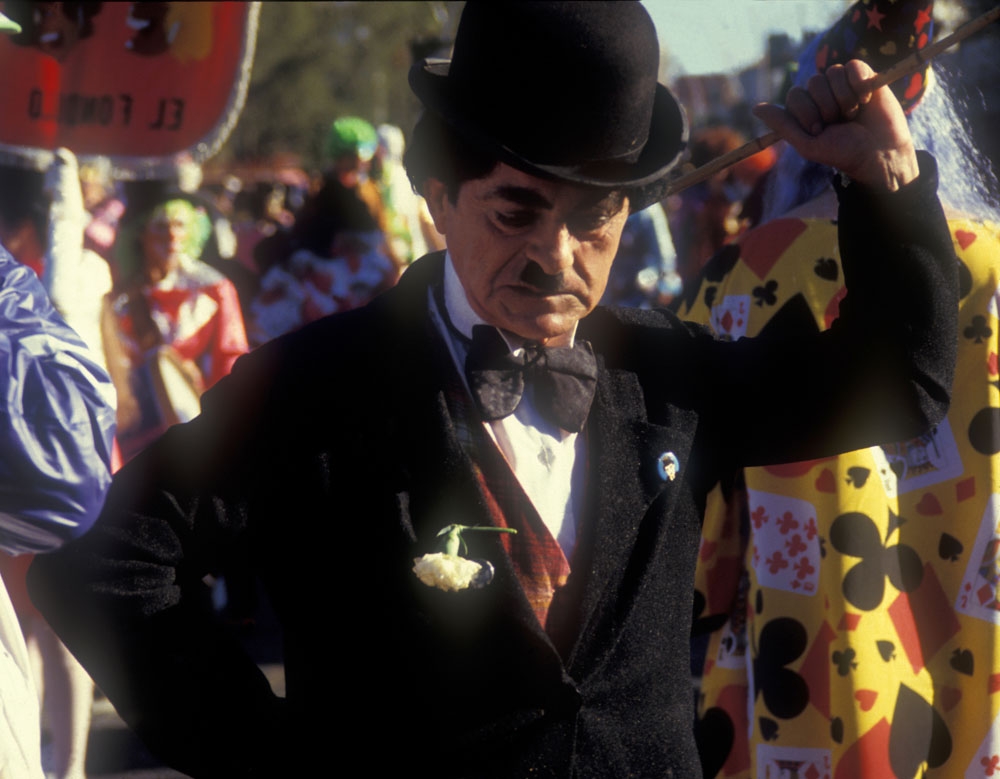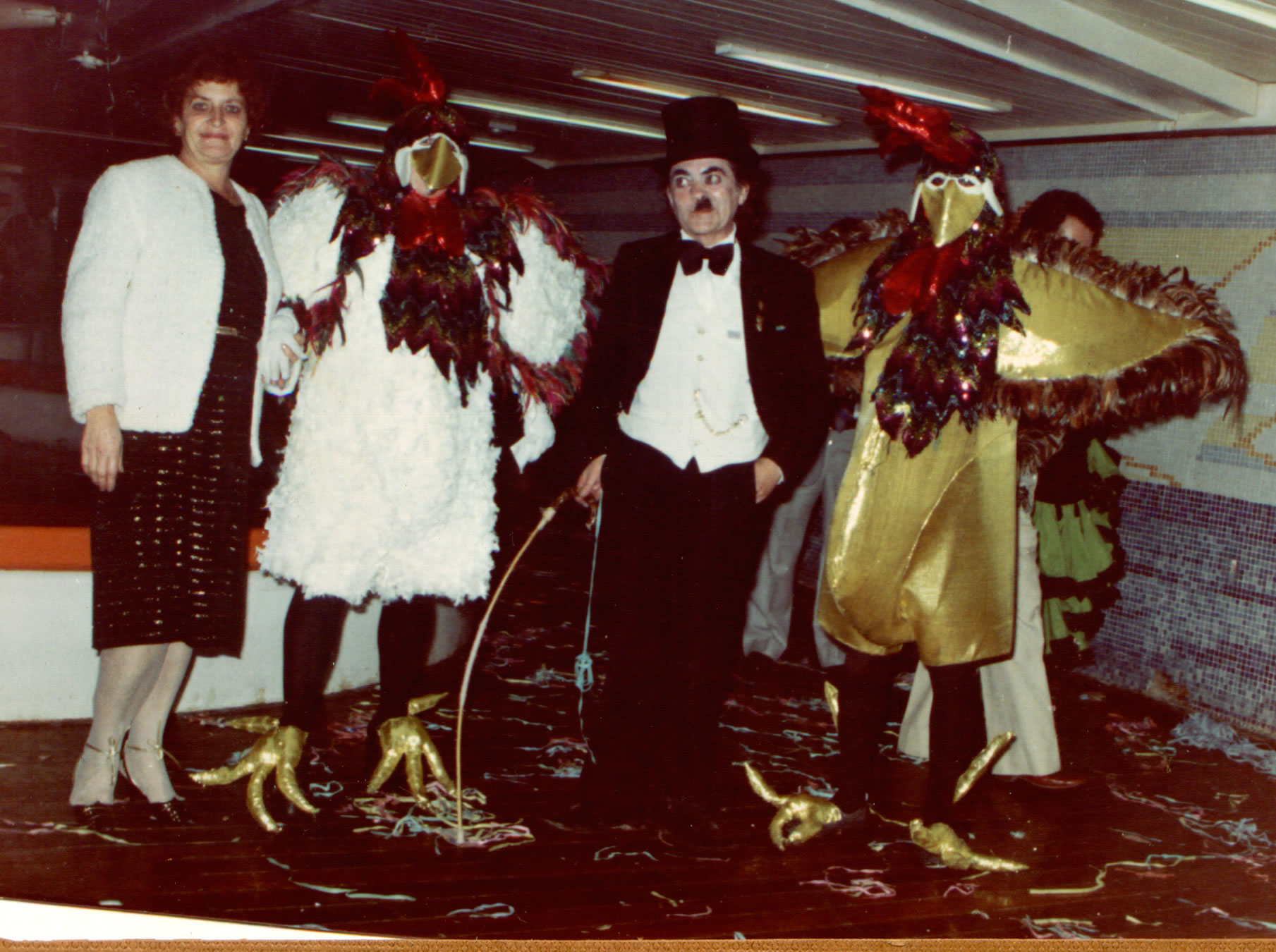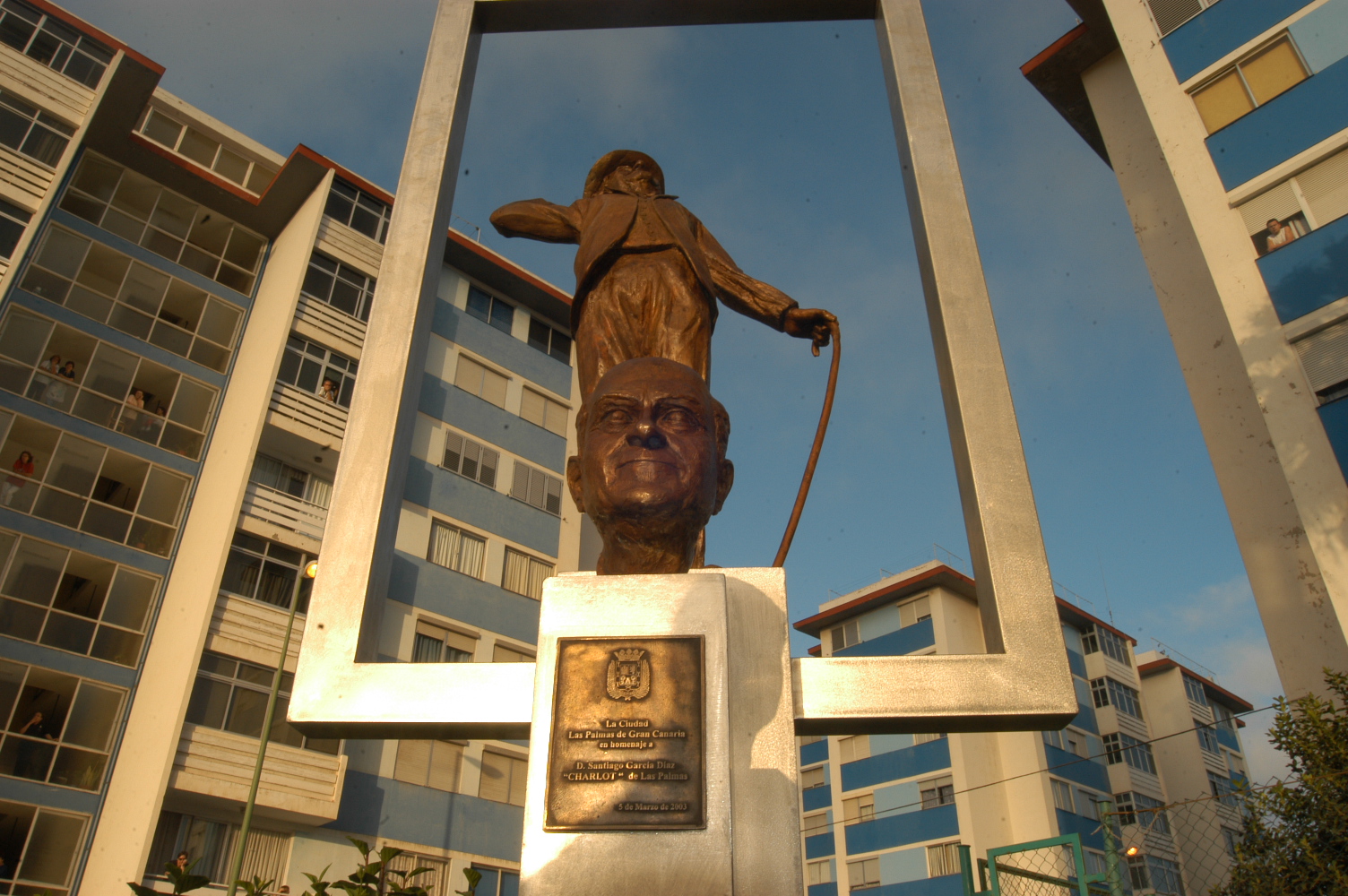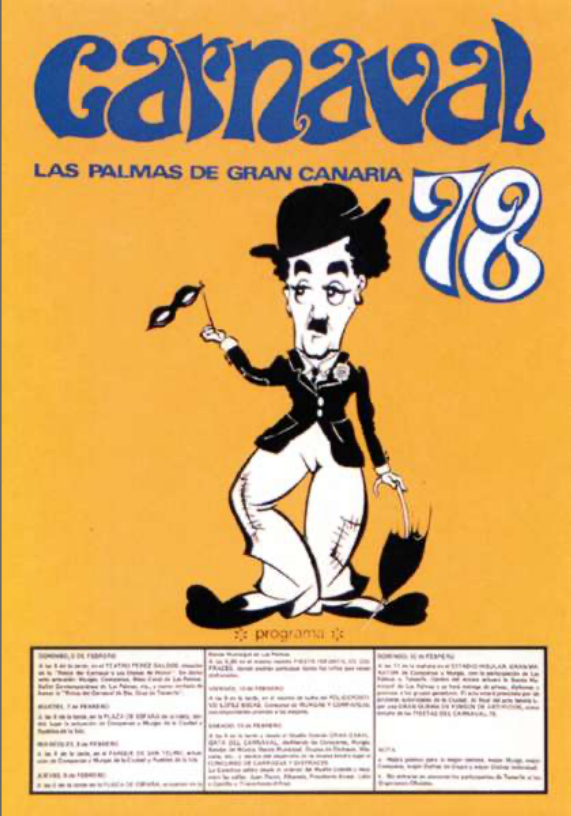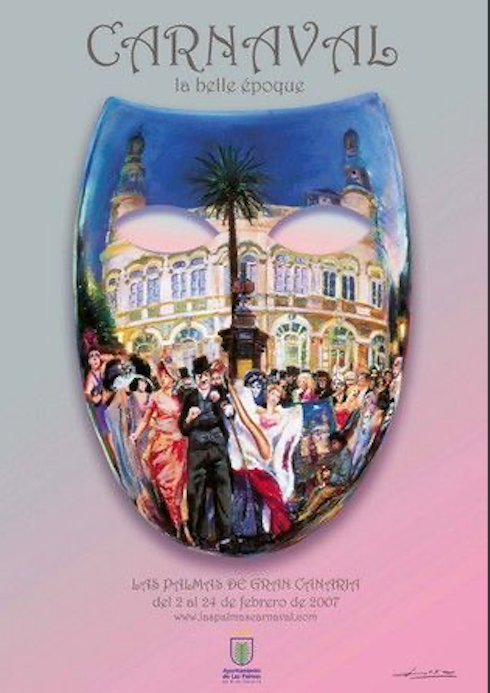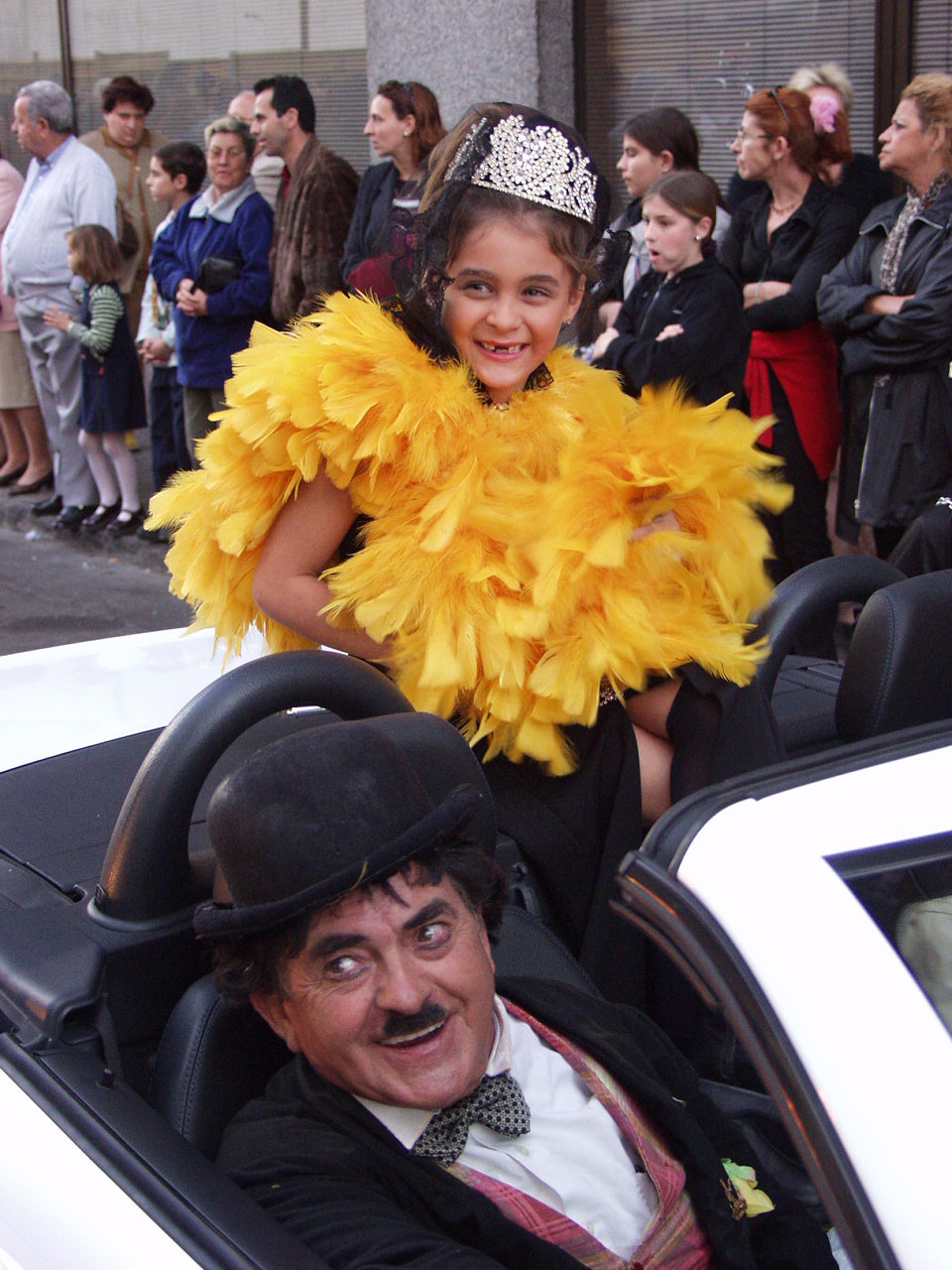Since 1976, this character began to appear on the Grancanarian capital’s streets during Carnival.
The real Chaplin died in December 1977: specifically, on Christmas Day. The universal filmmaker, comedian and writer left behind a halo of immortality on everything he had introduced to pop culture. Just a few months later, the Las Palmas de Gran Canaria Carnival dedicated its 1978 poster to the famous Little Tramp. It was the third year Carnival was celebrated after the Francoist dictatorship, so the Organisation’s gesture tapped into the spirit of openness and freedom to celebrate the fiestas even back then in those new beginnings.
Though, even before then, since 1976, this character began to appear on the Grancanarian capital’s streets during Carnival: that is, a skilled Chaplin impersonator, a man from Santa María de Guía (in the north of Gran Canaria) that soon acquired the nickname “Charlot del Carnaval de Las Palmas” (The Las Palmas Carnival Tramp). This man was Santiago García Díaz, one of the most famous characters in the history of the fiesta.
Don Santiago stayed faithful to Carnival year after year, always walking with The Tramp strut and moving his moustache comically. The Organisation even reserved a spot for him in Pablo Losa’s 2007 poster, an edition dedicated to La Belle Epoque.
Santiago García died shortly after the 2001 Carnival. His funeral was, as he wished, “a party full of carnival enthusiasts wanting to have fun”, with Carnival groups and party characters, all dressed up in costumes. Today, the city commemorates Don Santiago with a square named after him and a statue in the neighbourhood of Sansofé.

